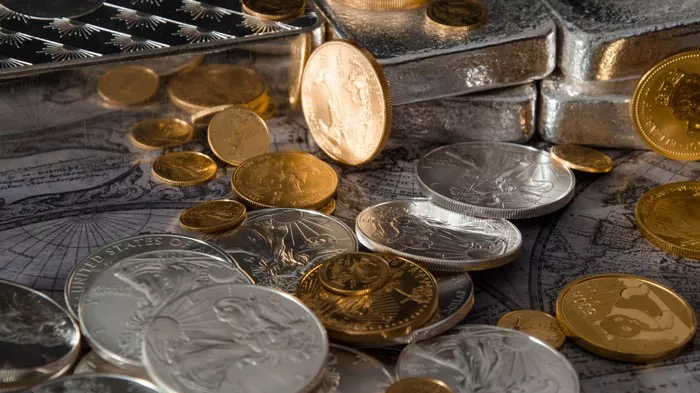In today’s volatile economic climate, investors are increasingly turning to precious metals like silver as a hedge against inflation and market uncertainty. Silver exchange-traded funds (ETFs) offer a convenient and cost-effective way to gain exposure to this precious metal without the need for physical ownership. However, with numerous options available in the market, selecting the best silver ETF can be a daunting task. This guide aims to provide investors with the necessary insights to make informed decisions when choosing a silver ETF for their investment portfolio.
Understanding Silver ETFs
Before diving into the specifics of individual ETFs, it’s essential to grasp the fundamentals of how silver ETFs operate. Silver ETFs are investment funds traded on stock exchanges, designed to track the price of silver. These ETFs typically hold physical silver bullion or invest in silver futures contracts.
Investing in a silver ETF offers several advantages over directly purchasing physical silver. Firstly, ETFs provide liquidity, allowing investors to buy and sell shares throughout the trading day at market prices. Secondly, ETFs eliminate the need for storage and insurance associated with holding physical bullion. Additionally, silver ETFs offer transparency, as their holdings are disclosed regularly, enabling investors to track the fund’s performance accurately.
Factors to Consider When Choosing a Silver ETF
When evaluating different silver ETFs, investors should consider various factors to determine which option aligns best with their investment objectives and risk tolerance. Some key considerations include:
1. Expense Ratio: The expense ratio represents the annual fee charged by the ETF provider for managing the fund. Lower expense ratios translate to higher returns for investors, all else being equal. Therefore, it’s essential to compare expense ratios when assessing different silver ETFs.
2. Liquidity: Liquidity refers to the ease with which investors can buy or sell shares of an ETF without significantly impacting its price. Highly liquid ETFs typically have narrow bid-ask spreads, reducing trading costs for investors. Liquidity is particularly crucial for active traders and those managing large investment portfolios.
3. Tracking Error: Tracking error measures the divergence between an ETF’s performance and the performance of its underlying index or benchmark. A low tracking error indicates that the ETF closely mirrors the price movements of silver. Investors should evaluate a fund’s historical tracking error to assess its effectiveness in replicating the silver market.
4. Asset Size: The size of an ETF’s assets under management (AUM) can influence its liquidity, trading volume, and operational stability. Larger ETFs tend to have lower expense ratios and greater trading activity, providing a more efficient investment experience.
5. Physical vs. Synthetic ETFs: Some silver ETFs hold physical silver bullion, while others utilize derivatives such as futures contracts to track the metal’s price. Investors should understand the differences between physical and synthetic ETFs and their associated risks before making investment decisions.
6. Tax Considerations: Tax implications can significantly impact an investor’s net returns. Silver ETFs held in taxable accounts may be subject to capital gains taxes upon sale, whereas investments in tax-advantaged accounts like IRAs may offer tax-deferred or tax-free growth.
7. Provider Reputation: The reputation and track record of the ETF provider are important factors to consider. Established and reputable providers often offer greater transparency, investor confidence, and adherence to regulatory standards.
Top Silver ETFs to Consider
Having outlined the critical factors to consider when evaluating silver ETFs, let’s explore some of the top options available to investors:
iShares Silver Trust (SLV):
1. Expense Ratio: 0.50%
2. AUM: $10.1 billion (as of Mar 07, 2024)
3. Objective: SLV aims to reflect the performance of the price of silver bullion, less the expenses of the trust’s operations.
4. Liquidity: SLV is one of the most liquid silver ETFs, with significant trading volume and narrow bid-ask spreads.
5. Physical Holdings: SLV holds physical silver bullion in vaults located in London, New York, and Toronto, providing investors with direct exposure to the metal.
Aberdeen Standard Physical Silver Shares ETF (SIVR):
1. Expense Ratio: 0.30%
2. AUM: $1.2 billion (as of Mar 07, 2024)
3. Objective: SIVR seeks to reflect the performance of the price of silver bullion, less the expenses of the trust’s operations.
4. Liquidity: SIVR offers robust liquidity, allowing investors to trade shares efficiently with minimal impact on prices.
5. Physical Holdings: SIVR holds physical silver bullion in secure vaults, providing investors with transparent and direct exposure to silver prices.
GraniteShares Silver Trust (SIL):
1. Expense Ratio: 0.50%
2. AUM: $300 million (as of Mar 07, 2024)
3. Objective: SIL aims to reflect the performance of the price of silver, less the expenses of the trust’s operations.
4. Liquidity: SIL provides adequate liquidity for most investors, although trading volume may be lower compared to larger ETFs like SLV and SIVR.
5. Physical Holdings: SIL holds physical silver bullion in vaults located in London and New York, ensuring transparency and security for investors.
VelocityShares 3x Long Silver ETN (USLV):
1. Expense Ratio: 1.65%
2. AUM: $100 million (as of Mar 07, 2024)
3. Objective: USLV seeks to replicate three times the daily performance of the S&P GSCI Silver Index ER, less investor fees.
4. Liquidity: USLV may exhibit lower liquidity compared to traditional silver ETFs due to its leveraged nature, resulting in wider bid-ask spreads and higher trading costs.
5. Synthetic Structure: USLV utilizes derivatives to achieve its investment objective, which may introduce additional risks such as leverage and counterparty risk.
Conclusion
Selecting the best silver ETF requires careful consideration of various factors, including expense ratios, liquidity, tracking error, and provider reputation. Investors should also assess their investment objectives, risk tolerance, and time horizon before making a decision. By conducting thorough research and understanding the nuances of different silver ETFs, investors can effectively incorporate these instruments into their portfolios to capitalize on the potential benefits of silver as a precious metal investment. Remember to consult with a financial advisor or conduct additional due diligence before making any investment decisions.


